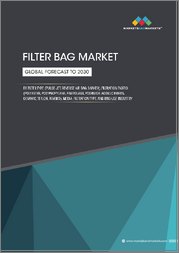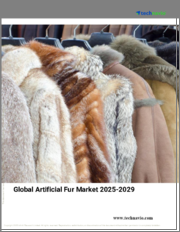
|
시장보고서
상품코드
1771390
세계의 아크릴 섬유 시장 수요, 예측 분석(2018-2034년)Global Acrylic Fiber Market Demand & Forecast Analysis, 2018-2034 |
||||||
세계 아크릴 섬유 시장은 합성섬유 산업에서 중요한 부분을 차지하고 있으며, 특히 양모와 같은 품질, 저렴한 가격, 범용성이 요구되는 합성섬유 산업에서 중요한 역할을 하고 있습니다. 아크릴 섬유는 가볍고 보온성이 뛰어나며, 색상 유지력이 우수하여 울의 대체재로 인기가 있습니다. 의류, 가정용 섬유, 산업용 제품에 많이 사용되고 있습니다. 친환경 대체품과의 경쟁과 원자재 가격의 변동에도 불구하고 섬유 기술의 발전과 신흥 국가 수요 증가로 인해 시장은 완만한 성장을 지속하고 있습니다.
용도 인사이트
아크릴 섬유 수요는 주로 의류 부문에 의해 촉진되고 있으며, 스웨터, 양말, 액티브웨어와 같은 제품의 세계적인 안정적인 소비로 인해 의류 부문이 가장 큰 시장 점유율을 차지하고 있습니다. 아크릴 섬유는 울과 같은 질감, 경량성, 우수한 색상 유지력을 인정받아 캐주얼 의류부터 퍼포먼스 의류까지 폭넓게 사용되고 있습니다. 패스트 패션과 천연섬유를 대체할 수 있는 비용 효율적인 대체품의 등장은 수요를 더욱 지원하고 있습니다.
지역 시장 동향
아시아태평양이 세계 아크릴 섬유 시장을 주도하고 있으며, 그 중에서도 중국과 인도는 대규모 섬유 산업이 있고, 생산 비용이 낮고, 내수 수요가 확대되고 있으므로 선두를 달리고 있습니다. 정부의 지원과 숙련된 노동력이 그 지위를 더욱 강화하고 있습니다. 일본과 한국은 하이테크와 산업용 섬유 용도에서 기여하고 있습니다. 유럽은 프리미엄 지속가능한 섬유에 대한 수요가 강하고, 북미는 의류 및 아웃도어 용도에서 안정적인 소비를 유지하고 있습니다. 라틴아메리카와 중동 및 아프리카의 신흥 시장은 섬유 산업의 확장과 중산층 인구 증가에 따라 점차 성장하고 있으며, 이 지역에서 아크릴 섬유 채택의 새로운 기회를 창출하고 있습니다.
업계 주요 기업
아크릴 섬유 시장은 어느 정도 집중되어 있으며, 주요 기업은 제품 품질, 비용 관리 및 혁신을 통해 경쟁하고 있으며, Aksa Akrilik Kimya Sanayii는 생산과 기술을 확장하는 주요 기업입니다. Dralon과 Jilin Qifeng Chemical Fiber는 아시아태평양을 중심으로 국내외 시장에 서비스를 제공하고 있습니다. Thai Acrylic Fiber와 Kaltex는 동남아시아와 라틴아메리카에 주력하고 있습니다. 인도에서는 Indian Acrylics Limited와 Pasupati Acrylon Limited가 유명한 공급업체입니다. 기타 주목할 만한 기업으로는 SINOPEC, Formosa Plastics Group, Birla Management Corporation, Taekwang Industrial, Toray Industries 등이 있으며, 모두 생산능력 증강과 연구에 투자하고 있습니다.
시장 성장 촉진요인
원자재 가격 변동, 섬유 기술 향상, 합성 섬유에 대한 환경적 우려 등 여러 요인이 아크릴 섬유 시장을 형성하고 있습니다. 지속가능성에 대한 관심이 높아지면서 제조업체들은 바이오 아크릴 섬유와 재생 아크릴 섬유를 개발하기 위해 노력하고 있습니다. 내구성이 뛰어나고 관리하기 쉬우며 매력적인 섬유에 대한 소비자의 선호는 계속해서 제품 혁신을 촉진하는 요인으로 작용하고 있습니다.
특히 개발도상국에서는 저렴한 가격의 섬유 소재에 대한 안정적인 수요가 있으며, 큰 성장 촉진요인이 되고 있습니다. 아크릴 섬유는 울, 나일론, 폴리에스테르와 혼방이 가능하므로 패션 용도 및 산업 용도로 활용도가 높습니다. 보색성, 내후성, 보온성 등의 특성으로 인해 기후가 혹독한 지역이나 아웃도어 용품에 인기가 있습니다. 이러한 특징이 신흥 경제국의 패션 및 가구 동향 증가와 맞물려 현재 시장 성장을 지원하고 있습니다.
과제, 억제요인
아크릴 섬유 시장에서는 환경 문제가 큰 이슈로 떠오르고 있습니다. 석유에서 추출한 합성 섬유인 아크릴 섬유는 생산 과정에서 상당한 온실가스를 발생시킵니다. 또한 아크릴 섬유는 생분해성이 없어 미세 플라스틱 오염의 원인이 되어 지속가능성 문제를 야기하고 있습니다. 그 결과, 소비자 수요는 점차 환경 친화적인 대체품으로 점차 이동하고 있습니다. 규제 압력과 친환경 소재의 부상으로 인해 제조업체가 더 깨끗한 제조 공정과 지속가능한 대안에 투자하지 않는 한 시장 성장을 저해할 수 있습니다.
세계의 아크릴 섬유 시장에 대해 조사분석했으며, 시장 역학과 산업 동향, 각 부문의 수요, 제조업체 개요 등의 정보를 제공하고 있습니다.
목차
제1장 서론
제2장 시장 요약
- 시장의 진화
- 수요 개요
- 산업 구조
- 전략상 문제
- 최종 용도 동향
- 성장 예측
제3장 경제와 에너지 전망
- GDP와 인구통계
- 금융정책과 재정정책
- 원유생산과 가격
- 천연가스
- 전기요금
제4장 최종 용도 부문 실적
- 텍스타일
- 가정
- 산업
- 기타
제5장 아크릴 섬유의 서론과 시장 개요
- 제품 설명
- 등급과 특성
- 원재료
- 제조 프로세스
- 환경 문제
- 밸류체인
- 용도
제6장 시장 역학과 산업 동향
- 시장 역학
- 촉진요인
- 억제요인
- 기회
- 과제
제7장 세계의 아크릴 섬유 수요 분석 : 용도별(수량과 금액)(2018-2034년)
- 전략상 문제와 COVID-19의 영향
- 수요 분석과 예측(2018-2034년)
- 수요
- 수요 성장률
- 촉진요인 분석
- 세계의 아크릴 섬유 시장 : 용도별
- 의류
- 가정용품·가구
- 산업
- 기타
제8장 수요의 분석과 시장의 리뷰 : 지역/국가별(수량과 금액)(2018-2034년)
- 전략상 문제와 COVID-19의 영향
- 수요 분석과 예측(2018-2034년)
- 수요
- 수요 성장률
- 아크릴 섬유 시장 : 용도별
- 북미
- 미국
- 캐나다
- 멕시코
- 서유럽
- 독일
- 프랑스
- 이탈리아
- 영국
- 스페인
- 기타 서유럽
- 중유럽·동유럽
- 러시아
- 폴란드
- 기타 중유럽·동유럽
- 아시아태평양
- 중국
- 일본
- 인도
- 한국
- 기타 아시아태평양
- 중남미
- 중동 및 아프리카
제9장 가격 분석
제10장 주요 전략상 문제와 사업 기회 평가
- 시장의 매력 평가
- 전망과 타겟 시장 조사
제11장 전략적 추천과 제안
제12장 기업 분석
- 아크릴 섬유 제조업체 개요/기업 분석
- 기본 상세
- 본사, 주요 시장
- 소유
- 기업의 재무
- 제조 기반
- 세계의 매출액
- 총직원 수
- 제품 포트폴리오/서비스/솔루션
- 채택된 주요 사업 전략과 Prismane Consulting 개요
- 최근 발전
- 대상 기업
- Aksa Akrilik Kimya Sanayii
- Dralon
- Jilin Qifeng Chemical Fiber
- Thai Acrylic Fiber
- Kaltex
- Indian Acrylics Limited
- Pasupati Acrylon Limited
- SINOPEC
- Formosa Plastic Group
- Birla Management Corporation
- Taekwang Industrial
- Toray Industries
- 기타 제조업체
제13장 부록
KSA 25.07.25The global acrylic fiber market remains an important part of the synthetic fiber industry, especially where wool-like qualities, affordability, and versatility are needed. Acrylic fibers are lightweight, warm, and retain color well, making them popular substitutes for wool. They are commonly used in clothing, home textiles, and industrial products. Despite competition from eco-friendly alternatives and fluctuations in raw material costs, the market is seeing moderate growth thanks to advances in textile technology and increasing demand from developing countries.
Application Insights
Acrylic fiber demand is primarily driven by the apparel sector, which accounts for the largest market share due to consistent global consumption of products like sweaters, socks, and activewear. Valued for its wool-like texture, lightweight nature, and color retention, acrylic is widely used in both casual and performance clothing. The rise of fast fashion and cost-effective alternatives to natural fibers further supports demand.
The home textiles segment also plays a significant role, with acrylic used in carpets, curtains, upholstery, and blankets. Urbanization, rising disposable incomes, and evolving interior design trends have boosted demand for stylish yet durable home furnishings. Acrylic's resistance to sunlight and moisture makes it particularly suitable for long-lasting indoor and outdoor textile products.
Industrial applications, though smaller in scale, are expanding steadily. Acrylic fibers are increasingly used in filtration systems, thermal and acoustic insulation, and specialty fabrics thanks to their chemical and thermal resistance. These applications are gaining traction across automotive, construction, and environmental sectors. Acrylic fiber's excellent weather resistance supports its use in outdoor fabrics, including awnings, marine textiles, and garden furniture. Innovations in blended and technical textiles are opening new growth avenues in sportswear, healthcare, and sustainable fabric solutions, reinforcing acrylic's versatile role across industries.
Regional Market Trends
Asia-Pacific leads the global acrylic fiber market, with China and India at the forefront due to their large textile industries, low production costs, and rising domestic demand. Government support and a skilled workforce further strengthen their position. Japan and South Korea contribute through high-tech and industrial textile applications. Europe sees strong demand for premium, sustainable textiles, while North America maintains steady consumption across apparel and outdoor uses. Emerging markets in Latin America and the Middle East & Africa are growing gradually as textile industries expand and middle-class populations rise, creating new opportunities for acrylic fiber adoption in these regions.
Leading Industry Players
The acrylic fiber market is somewhat concentrated, with key companies competing through product quality, cost management, and innovation. Aksa Akrilik Kimya Sanayii is a major player expanding production and technology. Dralon and Jilin Qifeng Chemical Fiber serve both local and international markets, especially in Asia-Pacific. Thai Acrylic Fiber and Kaltex focus on Southeast Asia and Latin America. In India, Indian Acrylics Limited and Pasupati Acrylon Limited are prominent suppliers. Other notable companies include SINOPEC, Formosa Plastics Group, Birla Management Corporation, Taekwang Industrial, and Toray Industries, who all invest in capacity growth and research.
Market Drivers
Several factors shape the acrylic fiber market, including raw material price changes, improvements in fiber technology, and environmental concerns related to synthetic fibers. There is growing interest in sustainability, leading manufacturers to explore bio-based or recycled acrylic fibers. Consumer preferences for durable, easy-care, and attractive textiles continue to drive product innovation.
The steady demand for affordable textile materials, especially in developing nations, is a major growth driver. Acrylic fiber's ability to blend well with wool, nylon, and polyester enhances its versatility in fashion and industrial uses. Its qualities such as color retention, weather resistance, and insulation make it popular in regions with harsh climates and for outdoor gear. These features, combined with growing fashion and home furnishing trends in emerging economies, support ongoing market growth.
Challenges and Constraints
Environmental concerns pose a significant challenge to the acrylic fiber market. Being a petroleum-based synthetic fiber, its production generates considerable greenhouse gases. Additionally, acrylic fiber is not biodegradable and contributes to microplastic pollution, raising sustainability issues. As a result, consumer demand is gradually shifting toward greener alternatives. Regulatory pressures and the rise of eco-friendly materials may restrict market growth unless producers invest in cleaner manufacturing processes and sustainable options.
Table of Contents
1. Introduction
- Scope
- Market Coverage
- Applications
- Regions
- Countries
- Years Considered
- Historical - 2018 - 2023
- Base - 2024
- Forecast Period - 2025 - 2034
- Research Methodology
- Approach
- Research Methodology
- Prismane Consulting Market Models
- Assumptions & Limitations
- Abbreviations & Definitions
- Conversion Factors
- Data Sources
2. Market Synopsis
- Market Evolution
- Demand Overview
- Industry Structure
- Strategic Issues
- End-use Trends
- Growth Forecast
3. Economic & Energy Outlook
- GDP and Demographics
- Monetary & Fiscal Policies
- Crude Oil Production and prices
- Natural Gas
- Electricity Prices
4. End-use Sector Performance
- Textile
- Household
- Industrial
- Others
5. Introduction to Acrylic Fiber and Market Overview
- Product Description
- Grades & Properties
- Raw Material
- Manufacturing Process
- Environmental Issues
- Value Chain
- Applications
6. Market Dynamics and Industry Trends
- Market Dynamics
- Drivers
- Restraints
- Opportunities
- Challenges
7. Global Acrylic Fiber Demand Analysis, By Applications (Volume, Value) (2018-2034)
- Strategic Issues and COVID-19 Impact
- Demand Analysis and Forecast (2018- 2034)
- Demand
- Demand Growth Rate (%)
- Driving Force Analysis
- Global Acrylic Fiber Market, By Applications
- Apparels
- Household & Furnishing
- Industrial
- Others
8. Demand Analysis and Market Review, By Region, By Country (Volume, Value), (2018- 2034)
- Strategic Issues and COVID-19 Impact
- Demand Analysis and Forecast (2018- 2034)
- Demand
- Demand Growth Rate (%)
- Acrylic Fiber Market, By Applications
Note: Demand Analysis has been provided for all major Regions / Countries as mentioned below. The demand (consumption) split by applications have been provided for each of the countries / regions in Volume (Kilo tons) and Value (USD Million).
- North America
- USA
- Canada
- Mexico
- Western Europe
- Germany
- France
- Italy
- United Kingdom
- Spain
- Rest of Western Europe
- Central & Eastern Europe
- Russia
- Poland
- Rest of Central & Eastern Europe
- Asia-Pacific
- China
- Japan
- India
- South Korea
- Rest of Asia-Pacific
- Central & South America
- Middle East & Africa
Note: CAGR will be calculated for all applications to arrive at the regional / global demand growth for the forecast period (2025 - 2034)
9. Pricing Analysis
10. Key Strategic Issues and Business Opportunity Assessment
- Market Attractiveness Assessment
- Prospective & Target Market Study
11. Strategic Recommendation & Suggestions
12. Company Analysis
- Acrylic Fiber Manufacturers Profiles/ Company Analysis
- Basic Details
- Headquarter, Key Markets
- Ownership
- Company Financial
- Manufacturing Bases
- Global Turnover
- Total Employee
- Product Portfolio / Services / Solutions
- Key Business Strategies adopted and Prismane Consulting Overview
- Recent Developments
- Companies Covered -
- Aksa Akrilik Kimya Sanayii
- Dralon
- Jilin Qifeng Chemical Fiber
- Thai Acrylic Fiber
- Kaltex
- Indian Acrylics Limited
- Pasupati Acrylon Limited
- SINOPEC
- Formosa Plastic Group
- Birla Management Corporation
- Taekwang Industrial
- Toray Industries
- Other Manufacturers
Note: This section includes company information, company financials, manufacturing bases and operating regions. Company financials have been mentioned only for those companies where financials were available in SEC Filings, annual reports, or company websites. All the reported financials in this report are in U.S. Dollars. Financials reported in other currencies have been converted using average currency conversion rates. Company profiles may include manufacturers, suppliers, and distributors.
13. Appendices
- Demand - Regions
- Demand - Countries



















